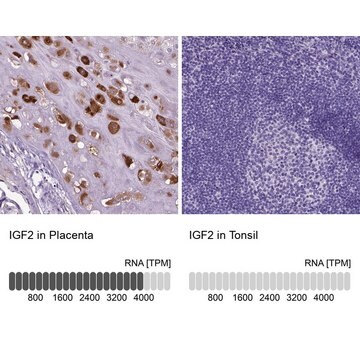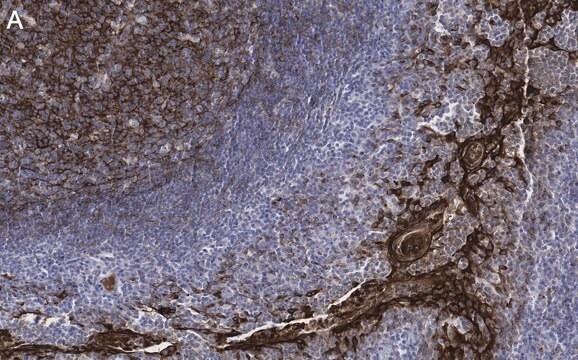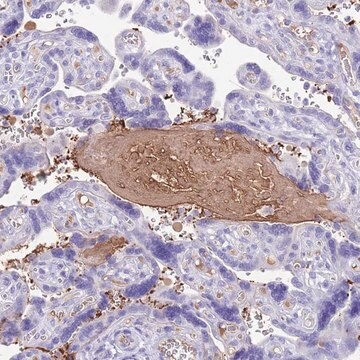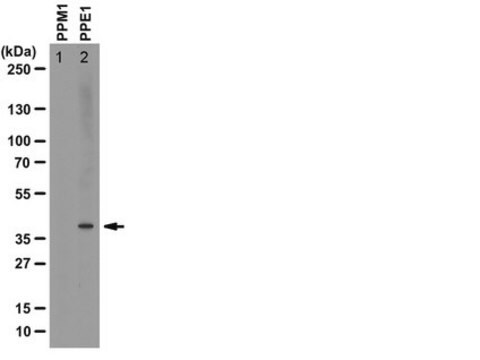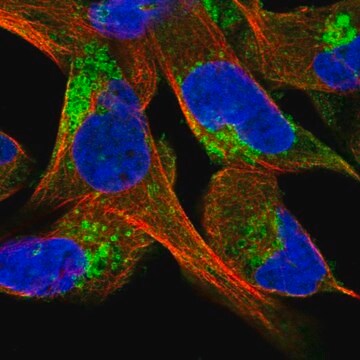MABS460-I
Anti-FGF23 Antibody, clone 278-2
About This Item
Prodotti consigliati
Origine biologica
human
Livello qualitativo
Coniugato
unconjugated
Forma dell’anticorpo
purified antibody
Tipo di anticorpo
primary antibodies
Clone
278-2, monoclonal
PM
calculated mol wt 27.95 kDa
observed mol wt ~37 kDa
Purificato mediante
using protein G
Reattività contro le specie
human
Confezionamento
antibody small pack of 100 μg
tecniche
flow cytometry: suitable
western blot: suitable
Isotipo
IgG1κ
Sequenza dell’epitopo
Unknown
N° accesso ID proteina
N° accesso UniProt
Condizioni di spedizione
2-8°C
modifica post-traduzionali bersaglio
unmodified
Informazioni sul gene
human ... fgf23> FGF23(8074)
Categorie correlate
Descrizione generale
Specificità
Immunogeno
Applicazioni
Evaluated by Western Blotting in Human brain tissue lysates.
Western Blotting Analysis: A 1:1,000 dilution of this antibody detected FGF23 in Human brain tissue lysates.
Tested Applications:
Flow Cytometry Analysis (FC): 1 μg of this antibody detected Fibroblast growth factor 23 (FGF23) in one million Jurkat cells pretreated with Brefeldin A (1 μg/mL 4 h).
Stato fisico
Stoccaggio e stabilità
Altre note
Esclusione di responsabilità
Non trovi il prodotto giusto?
Prova il nostro Motore di ricerca dei prodotti.
Codice della classe di stoccaggio
12 - Non Combustible Liquids
Classe di pericolosità dell'acqua (WGK)
WGK 1
Punto d’infiammabilità (°F)
Not applicable
Punto d’infiammabilità (°C)
Not applicable
Certificati d'analisi (COA)
Cerca il Certificati d'analisi (COA) digitando il numero di lotto/batch corrispondente. I numeri di lotto o di batch sono stampati sull'etichetta dei prodotti dopo la parola ‘Lotto’ o ‘Batch’.
Possiedi già questo prodotto?
I documenti relativi ai prodotti acquistati recentemente sono disponibili nell’Archivio dei documenti.
Il team dei nostri ricercatori vanta grande esperienza in tutte le aree della ricerca quali Life Science, scienza dei materiali, sintesi chimica, cromatografia, discipline analitiche, ecc..
Contatta l'Assistenza Tecnica.
